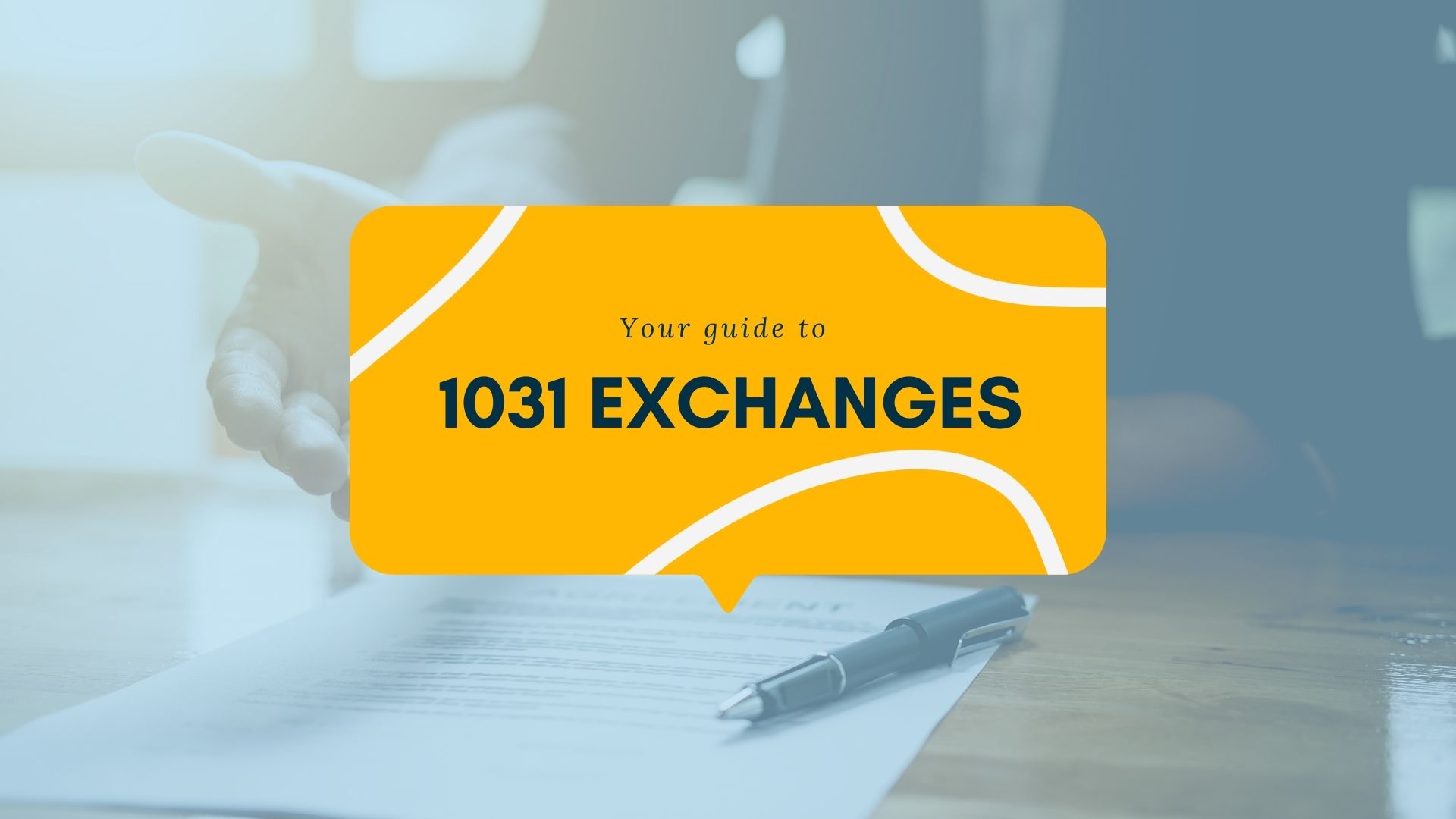We’re going to talk about one of the most commonly discussed aspects of real estate investing out there. I get asked it repeatedly, especially by new investors, and that is, “What markets should I be investing in?” I get this question constantly, and for a good reason, right? It’s almost one of the main things of investing in real estate.
When you are going into your first investment in real estate, especially, and you’re trying to understand what market, the natural thing to do is just invest in your own market. I mean, when you don’t really know, you kind of just assume all the markets are the same, but that’s wrong. The second you get into it, and you start looking at the data, you realize how wrong of a statement that really is. All markets are not created equal. There are benefits and cons of each market, and we need to get into those. We need to start learning about them, and we need to help you become a better investor.
The first thing that’s really important when you’re looking at markets, each market is different. Each market has pros and cons. The things that I say, the markets that I invest in, may or may not be the right markets for you, but I want you to understand markets in general and real estate markets and how they’re different and how they vary across the entire country. I did a ton of research. I gathered information from all different kinds of reports, sources, websites, and all these credible sources to help you understand the differences in the markets. So, we are going to get into the data right now. I’m a big multi-family investor and developer, so I’m going to take you through some of my thought process in looking at multi-family markets that I want to develop in.
I’m going to walk you through this. If it gets a little boring, I am sorry. There is nothing boring about real estate investing, but the data is important, and sometimes the data isn’t as flashy as everything else, but it gets you to the right answers, which is what we’re trying to do here. We’re trying to become better real estate investors. We’re trying to take our busy lives and hard-earned money that we made selling whatever it is that we sold, and we are trying to figure out how to create generational wealth.
General Real Estate Rankings
First, I looked at a report released by WalletHub for real estate rankings. This is just general real estate rankings. This list is broken out by large cities, mid-size cities, and small cities. By the way, we’re going to be talking about a lot of reports here., You can find all of these reports in the post notes, so if you feel like you want to dive into a report even more, totally understandable. Go to those post notes, click on the report, and you can see the whole report.
WalletHub released the top-ranking cities for real estate by size. They put large cities, mid-sized cities, and small cities in here. They vary, but I’m just going to run through some of these. This is general. This is coming from a report, so I’m not giving any opinions here. We’re just going to go through the data.
Large cities:
- Seattle, Washington
- Nashville, Tennessee
- Austin, Texas
- Colorado Springs, Colorado
- Denver, Colorado
- Charlotte, North Carolina
- Aurora, Colorado
- Fort Worth, Texas
- Mesa, Arizona, whoo-whoo
- Tampa, Florida
By the way, I’m not from Mesa, but we do a lot in Mesa, so I had to give a little shout-out.
Mid-size cities:
- Boise, Idaho
- Frisco, Texas
- Gilbert, Arizona (right next to Mesa)
- Durham, North Carolina
- Tacoma, Washington
- Cary, North Carolina
- McKinney, Texas
- Tempura, Arizona
- Vancouver, Washington
- Tempe, Arizona.
Those are the ten. We’ve gone through large and mid-size. It’s important because each of these have different classifications, and there are different pros and cons to investing in a small city versus a large city. Next are the small cities, which I’m not going to go through this list very much.
Small Cities:
- One from Tennessee
- A couple of Washington
- Surprise, Arizona
- One from Tennessee
- A couple of Washington
- Surprise, Arizona
- Some Texas
- Roseville, California – The only California market to make it on here. Congratulations, California!
What Are You Looking For?
Now, we’re going to go dive down into step two. Once you understand, generally, where real estate markets are, you have to define it into what it is you’re looking for. Because of that, I decided to show how I was analyzing markets for apartments and multi-family specifically. That’s our main thing. We do other things, but I’m mainly an apartment guy, so that’s why I narrowed it down. But if you’re interested in self-storage, you’ll want to narrow it down for self-storage.
For example, Seattle, Washington, was number one on the list for large cities. I’m just using a hypothetical because I’m not investing in Seattle, but apartments in Seattle might kill it. Self-storage in Seattle, not so good. It might be worthless. So, it’s important to understand by asset class.
So, looking at apartments, and keep that list in the back of your mind because we’re going to meld it all together here at the end. Keeping that list of best real estate markets in your mind, now we’re going to go in, and we’re going to narrowly define. So, we looked at a report. This is put out by Arbor. They basically score large multi-family opportunities by city, and this is specifically what we do, 100+ units up to I think our largest one in development right now is 320.
Large Multi-Family Opportunities by City
I decided to look at large multi-family units. This is specifically, large multi-family opportunities by city. This report takes in a lot of different criteria. It’s a great report. It does lending volumes, market size, labor market, really important in multi-family, personal mobility, rental performance, all these things. They even included COVID because we’re still going through that. If you’re reading this in real-time, you understand that. If you’re reading this two or three years down the road, I have no idea if COVID’s still around, but for this purpose, it’s taking in COVID.
Here’s the ranking:
1.Seattle, Washington
2.Phoenix, Arizona
3.Austin, Texas
4.San Antonio, Texas
5.Dallas, Texas — Man three, right in a row
6.Portland, Oregon
7.Baltimore, Maryland
8.Denver, Colorado
9.Minneapolis, Minnesota
10.Columbus, Ohio.
Now, as you’re going through that list, think about some of the similarities here. Phoenix, Mesa, Gilbert, those areas all showed up here. Seattle showed up here twice as number one on both lists. It gives you something to think about. I might have to start looking at Seattle with all of this. A bunch of cities in Texas are on the list. So, you’re starting to see these similarities as we go throughout this.
All these two lists so far, what they do is they only give us a good indication, where the market, in general, is going, what’s happening in general in the market. But we can’t stop there because certain factors go into all of these. Take right now, for example. A factor in real estate markets is COVID. The good news is it’s not affecting apartments as much as we thought it was going to back when this started over a year ago, but it’s still going on, and there are still potential effects.
So, it’s important to look at some of those major things, and some of this just involves common sense and using your head, right? I mean, just thinking about what’s going on in the world that might affect real estate.
Cities That are Best Poised to Recover From COVID-19
So, we pulled another report, and we simply said, “All right, we want to know what cities are best poised to recover from COVID-19.” You can find the list by clicking here. It was posted by Forbes, but just to give us a general idea. They didn’t rank them. They simply just gave ten best lists and sorted them alphabetically. So, this isn’t by ranking, but let me list some of these for you.
- Boise, Idaho
- Denver, Colorado
- Durham, North Carolina
- Madison, Wisconsin
- Provo, Utah
- Raleigh, North Carolina
- Salt Lake City, Utah
- San Jose, California
- Tucson, Arizona
- Washington DC
Once again, another similarity, right? You have common threads throughout all of these reports pulled from different places. The good news with data is, as you start analyzing it, you realize there are common threads that you should start looking at.
One of the favorite phrases that I’ve heard in real estate is, “Live where you want or need to live, but invest in real estate where it makes the most sense for what your goals are.” That’s what we’re trying to do is gain an understanding of these markets that might make the most sense to be investing in. As I said, I’m taking this specifically for apartments, but if you’re interested in industrial, you’re interested in retail, do the same kind of exercise.
They also listed the worst ten cities, but I won’t go over those because, to be honest, I just don’t want to make anyone feel bad from these cities, but needless to say, if you go through this list, pretty much none of them are in any of the other lists. So, that’s good news.
My Recommendation on Where to Invest
We’ve been through these lists. We’ve seen this information. I’m going to give you my recommendations, and I don’t have a magic eight ball. I don’t know exactly what’s going to happen in the future. But I’m going to give you my opinion on where we’re at in some of these markets and where we’re going. I’m going to tell you where I invest and why I invest there.
Another thing to keep in mind, we’re looking at markets broadly. We’re not getting into metro’s as much, and that’s really important too because real estate is very location-based and location-based not only from state to state, metro to metro, but even city to city, or area within a city compared to another area within the same city case. So, just keep in mind, we’re keeping it a little bit broader. We’re keeping it a little bit more general, and I’m doing that on purpose. Later on, and in a future post, we’ll start getting into how we analyze metros.
Here are some of my conclusions from what I see, just in general. I may or may not be invested in some of these markets. I can tell you I’m not invested in all of them. I am invested in some. Here’s my recommendation. Based on the list that I just went through, what are the areas that make the most sense?
To me, Arizona, especially in Maricopa County. Right around Phoenix, Mesa, Gilbert, Surprise was on there, which is West of Phoenix. Arizona, especially Maricopa County, seems like a place that’s poised to do really well in real estate investments. They’re poised to do well in relation to COVID. They’re poised to do well in relation to real estate in general, and they’re poised to do well as far as large multi-family. So, Arizona, especially right around Maricopa County. If I’m interested in investing, that might be an area I’m going to look.
Another area that I’m probably going to look at is Idaho, especially Boise. Throughout this entire process, Boise State was an area that kept showing up repeatedly. It’s a different market, and there’s different things compared to Phoenix. In Phoenix, I might be interested in putting a 500-unit multi-family development down there. I might be a little more hesitant in Boise, Idaho to put a 500-unit development. I might put a 200- or 150-unit development. But Idaho, especially around Boise, that’s a market that appears to be doing well. It’s showing up repeatedly.
I got two more markets here. The next is Texas. Texas is riddled throughout this list. Texas appears to be doing really well in regard to real estate investments and the potential for future real estate investments. Looking through this list again, I can’t even pinpoint a specific city or area. It’s just like all of Texas. It makes me think I need to get in Texas. I’m not in Texas right now, but basically everywhere in Texas. (Austin, Fort Worth, McKinney, Denton, Allen, Dallas.) Texas is all over the place. Looking through that, if I were interested in Texas, I’d probably be looking at Austin, Dallas, San Antonio, some of those areas. But those are areas that appear to potentially be doing really well as far as real estate investments.
Two more that come up on this list for me. Utah. As far as cities poised to recover well from COVID, Utah shows up twice in that list. In relation to how big Utah is, it appears that Utah is going to do really well in the coming future. Now, Utah didn’t make any of the other lists, and it’s probably because it’s a little bit of a smaller market. I don’t know, but Utah is doing really well. I kind of lump it, Arizona, Utah, Idaho. A lot of those are right together, and you want to know the last one on the list is hilarious, but last on the list is Colorado. Utah, Colorado, Arizona, Idaho—all right next to each other.
You start looking at migration patterns. You start looking at the real estate in these areas, and it’s just an area that’s doing very well, and these aren’t regional reports. These are reports that take into account the entire country. So, that is my analysis, just going through the list, making those assumptions.
Where I Personally Invest
Now, I’m going to get into where I personally invest and why I invest there. The good news is most of the places I invest in are actually on this list. I’m investing in two areas right now, mainly—Utah and Maricopa County, Arizona. Those are the two areas that I am looking at. The reason that I am investing and developing in those areas constantly is because of a whole myriad of reasons. But the general real estate market in those areas has really good, really strong growth potential.
I look for what the market is right now, where it’s going to be in five years, and which areas have the most potential to grow and become real estate powerhouses in the future. That’s what I’m looking at.
The reason I focus on growth is because I’m a developer. As a developer, I make my money off of building an asset for less than the market value. Some of these assets, I mean, I have a 116-unit multi-family in Southern Utah that took about 14 months to build. We’re going to start a 240 unit in Mesa, Arizona. That’s going to take 18 to 24 months to build. I want to capture the growth that exists and that happens in that 18 to 24 month period.
If I can find markets that are growing, markets that appear that they’re going to be better off or a lot better off in two, three years down the road, then where we’re at right now, that’s really good for me. That’s why I focus so heavily on those growths because I want all that appreciation.
That’s why I invest where I do, and those are the factors that I’m looking at. As we’re looking at these markets, and you’re reading this from all over the country, the thing that I want you to recognize is that you can invest in these other markets. There’s a lot of different ways to invest in these markets, but it’s getting ingrained. It’s getting an understanding of what’s happening in those markets, whether you live there or not.



